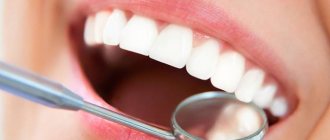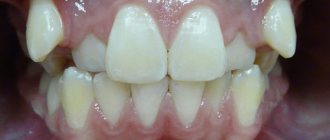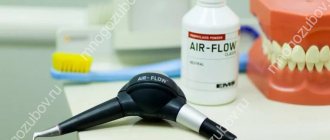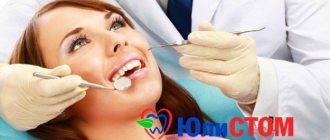Their main purpose is to change the shape and position of the jaws in the first place, and secondly to correct the position of the teeth. These devices are most often used in children and adolescents to normalize tooth growth and jaw formation, and in adult patients - for minor malocclusion pathologies or as a supplement/preparation for the main treatment1.
Indications
- correction of bite in children under 13 years of age,
- expansion or narrowing of the jaw,
- change in the position of the lower jaw,
- lengthening of the dentition,
- tooth displacement,
- minor correction of bite in adults,
- addition to treatment with braces,
- retention period.
Types of devices
- preventive – to normalize dental growth in children,
- therapeutic – to correct the bite, can be designed for 1 or 2 jaws at the same time,
- retention – to consolidate the results of the main treatment.
In what cases is teeth straightening necessary?
Smooth and beautiful teeth are the dream of many people. After all, not everyone was given a perfect smile at birth. Dental abnormalities can be the result of poor heredity, trauma, or improper dental care in childhood. If you clearly see that your teeth are crowded, your teeth protrude greatly from the dentition, or there are other deficiencies, you should contact an orthodontist. Sometimes the problem is far-fetched, but only a specialist can determine this. A preliminary diagnosis will be made at the first appointment, and then the doctor will be able to offer treatment options.
When does a child need to have their bite corrected?
Parents should note all important details in the child’s unconscious behavior. Pay attention to how the child breathes, whether his mouth is often open, whether he snores in his sleep, what position the lower jaw is in, whether he likes to gnaw hard objects - these factors have a huge impact on the development of dental pathologies. Take a closer look at the posture and structure of the foot, these are also important indicators of possible violations. Did you find any deviations? Consult a professional.
Risk factors
- difficulties with nasal breathing, for example, due to adenoids or allergies;
- spinal column deformity;
- bad habits;
- genetic predisposition to dental anomalies;
- diseases of the central nervous system.
If the listed risk factors are present, treatment will be effective only with the participation of doctors from related fields. Therefore, it is best to contact myofunctional centers, which unite orthopedists, pediatric dentists, orthodontists and osteopaths. The joint work of specialists guarantees accurate diagnosis and successful resolution of the issue.
Is it possible to straighten teeth in adults?
Of course, treatment is faster in children and adolescents. This is due to the fact that up to the age of 25 in a person, the processes of bone tissue regeneration proceed faster, the ossification of bone sutures has not yet been completed, which means orthodontic treatment will be more effective. But don’t think that adults can’t be helped. Dentists have been successfully helping straighten teeth for patients of any age for a long time. It just takes a lot of time. Orthodontists typically recommend braces or aligners as options for straightening teeth in adults. In some cases, if only one or two teeth are misaligned, doctors may use veneers. These extremely thin dental coverings provide a quick solution to the problem of an imperfect smile. If the problem is several teeth and in addition the doctor diagnoses malocclusions, you will still have to use orthodontic structures.
Manufacturing Features
When planning orthodontic treatment, digital technologies, specialized software and 3D modeling are used to create unique molds based on individual impressions from the patient’s teeth. To take accurate parameters, a digital intraoral scanner is used, the data from which is transferred to a computer. In the laboratory, 3D models are created according to individual parameters, according to which the required number of aligners is made. Numbered boxes with aligners are delivered to the dentist. The orthodontist explains to the patient how to properly install and remove aligners, and issues kits for 1-2 months of correction. Depending on the selected corrective system, production can take from several days to 2-3 weeks (if we are talking about foreign brands such as Invisalign, FlexiLigner, etc.)
Is it possible to straighten teeth at home?
Surely many people are interested in whether it is possible to straighten teeth at home. Don’t think that this can be done with the wave of a magic wand or using folk remedies. Teeth straightening at home means the use of aligners, trainers or elastopositioners. You will not be able to choose these designs yourself. You will need to contact an orthodontist - a doctor who straightens teeth, who will conduct an examination and tell you exactly whether removable structures will help in your case. Without a specialist, you won’t be able to cope with your problem - you shouldn’t even try. Attempting to straighten teeth without an orthodontist can lead to irreversible consequences.
How to straighten teeth for an adult?
Usually, correcting the bite and straightening the teeth is usually done in childhood. At an early age, these are removable structures, for example, trainers, lip bumpers or stretching plates; starting from the age of 10–11, braces can be installed. In some cases, you can do without braces, but the orthodontist will again tell you about this. For adults, it is more difficult to carry out the procedures. The fact is that at the age of 25, a person’s bone sutures harden, and any manipulations with the bite and other problems begin to take quite a lot of time. But this does not mean that you should give up dreams of a perfect smile. Answer to the question: “Is it possible to straighten teeth at 30 and beyond?” - of course, yes. At the first appointment, the orthodontist will tell you how to straighten teeth for an adult and what exactly to use in your case.
What ways are there to straighten teeth?
An orthodontist straightens teeth in several ways, as we have already mentioned. Let's talk about the most popular ones. The most popular way to straighten teeth is still the use of braces. Braces vary in material, location on the teeth and the presence of a ligature. However, regardless of the type, they regularly perform their functions - treating almost all malocclusions and incorrectly positioned teeth. You can inexpensively straighten your teeth and get rid of other problems by wearing metal vestibular (located on the outside of the dentition) braces.
If braces are not an option for you, you can straighten your teeth without braces using aligners. They solve several dental problems at once - they remove gaps between teeth, correct crowding and other malocclusions. One of the most popular brands is Invisalign aligners. Mouthguards are created taking into account individual characteristics, do not break and are almost invisible when worn. You can get used to them quite quickly. On average 10 – 12 hours. However, you will need to wear such mouthguards for more than 20 hours every day. You will need to accustom yourself to this, otherwise you will not achieve a good result.
Teeth straightening devices
There are two most popular orthodontic teeth straightening systems - braces and aligners (aligners). Each has its own characteristics. Braces have been used for many decades. They differ in several parameters, for example, in material. All types of braces are equally effective. This method of treatment is time-tested. In addition, braces systems are improved every year. Even metal braces have changed and turned from creepy “brackets” into a rather neat design. In parallel with bracket systems, other technologies are also developing. Thus, several years ago Invisalign aligners became widely used. Despite the high cost, their popularity has grown in a matter of months due to the following advantages:
- are created individually for each patient, taking into account his physiological characteristics
- invisible to others
- convenient for daily use
- do not require complex care
Braces
The designs allow you to level out any, even the most complex pathologies. The device consists of the braces themselves, which are individually attached to the teeth, and an arch - under its pressure, the dentition is rearranged into the correct position. Depending on the complexity of the anomaly, you will have to wear the device from six months to two years, regularly visiting a doctor. He will record changes and adjust the system. The main disadvantage of braces is their visibility, but today there are models that provide the opportunity to hide the treatment process from others. For example, ceramic and sapphire systems are white and blend in with the enamel, and lingual braces are completely invisible because they are installed on the inner wall of the teeth.
Aligners
Another device for straightening teeth is silicone aligners. They are made from transparent material based on the patient’s personal jaw casts, so they are completely invisible on the dentition. Another advantage of aligners is that they can be removed during meals or, for example, business negotiations. Treatment with aligners does not require frequent adjustments; it is enough to visit an orthodontist once every two months. You yourself change the devices from the kit every two weeks, the doctor only monitors the process. The device must be worn at least 22 hours a day, then the first results will appear within a month.
Prosthetics
For minor crooked teeth, crowns or veneers are used. They do not correct real teeth, but only mask malocclusions, but you can see the effect immediately after installing the structures. Crowns are used if the teeth are more than half destroyed - they are ground down and dentures identical to natural teeth are put on. Veneers are fixed in the smile area and hide aesthetic defects such as chips or gaps between teeth. The structures are created individually for each patient - the specialist selects the desired color and then gives them the anatomical shape of the surface of the teeth. However, these records have one significant drawback. Which? We'll talk about this below.
Massage can speed up healing
There are several ways to make the process of correcting dental anomalies less painful. One of them is massage of the gums and palate. Experts recommend using this method during oral care procedures. Gently, without force or sudden movements, massage the gums with a medium-hard brush, performing circular movements on each jaw. This will improve blood circulation, speed up the process of straightening the teeth, reduce pain, and if repeated regularly, strengthen the gums and prevent loosening of the teeth.
Surgical teeth straightening
Is it possible to straighten teeth surgically? We can say that it is impossible to surgically correct the position of the teeth, but it is possible to change the bite. The surgical method of bite correction is used only when orthodontic treatment alone is not enough.
Surgical correction of the bite, or orthognathic surgery, is only indicated for patients with noticeable skeletal deformities that result in abnormal jaw and chin size. The operation is performed in a hospital setting under general anesthesia; the entire procedure usually takes about 6 hours. Like any other major surgery, this procedure has a recovery period. The patient will be able to return to a full life after 3 to 4 weeks. However, in any case, treatment always begins with orthodontic teeth straightening, followed by a surgical stage, after which final orthodontic correction is necessary.
Now about correcting the bite in children of senior school age
Correcting the bite in children without braces is a youth trend
Justin Bieber trusted only aligners to straighten his teeth:
Benefits of correcting your bite without braces
- Unlike braces, aligners do not injure the oral mucosa. The edge of the tray undergoes special treatment and does not damage the gums
- The patient can remove the mouth guard while eating, and therefore there are no dietary restrictions as during treatment with braces
- Mouth guards can be removed while brushing teeth, which means the patient will not need special devices for oral hygiene
- Even the most aesthetic vestibular braces are more noticeable than clear aligners.
- The cost of treatment with invisible (relatively of course) lingual braces is often exorbitant, which cannot be said about aligners
- You can read a comparative analysis of treatment between braces and aligners in this article
Correction of bite with aligners due to diastema
Diastema can generally be corrected perfectly without braces. The aligners cope with the task 100%. In this example, treatment of the diastema took 5 months
.
Correction of bite with aligners during reverse incisal overlap
In this case, the treatment was more serious; teeth were straightened on both jaws. The duration of treatment is 15 months
.
Correcting a bite without braces using the example of spaces between teeth in the lower jaw
Teeth correction with aligners was carried out exclusively on the lower jaw and took 6 months
.
Correcting a bite with aligners using the example of turning the front teeth
Without using the lower jaw, aligners were worn only on the upper jaw. The total treatment period is 14 months.
Issues of correcting bites in adults are a separate topic that also requires detailed analysis. Read about it in the next article. Orthodontist, Ph.D. Tatyana Gevorkyan
In what cases is grinding necessary?
As we have already said, veneers are used to correct minor defects in the dentition - for example, chipped teeth, curvature of one or two teeth, as well as diastema. The main disadvantage of this method is the grinding of dental tissue to remove all irregularities. In addition, if you do not prepare your teeth before installing veneers, then after prosthetics they will look too convex and unnatural.
The structures themselves will last about ten years, after which they must be replaced with new ones, since turning teeth is an irreversible process.
Important!
To fix the veneers, the patient’s teeth are ground down by approximately 0.3 - 0.7 mm.
How do teeth become straight?
After the patient has been fitted with braces or has started treatment with aligners, the process of teeth straightening begins. The constant slight impact of the orthodontic system leads to the fact that the bone around the tooth changes: on the one hand it increases, and on the other it decreases. And the tooth moves to the desired point. It is important that the load is not excessive or insufficient - in either case, the treatment will not lead to the desired result. But an experienced orthodontist will not allow this to happen. It is to regulate the process of teeth straightening that you need to regularly visit your doctor. Treatment will last 1.5 – 2 years. After this, you will have to wear retainers for some time to fix the result.
Retention orthodontic equipment – retainers
Retainers are needed
to keep teeth in their new place after orthodontic treatment. It is impossible not to wear a retainer, otherwise a relapse will occur. We use various types of retention devices or combinations thereof at the discretion of the treating orthodontist
- Retention plates
are removable retention devices in the form of an orthodontic plate with a plastic base and wire clasps. Made individually in the laboratory. Worn by the patient at night. Can be used in combination with a permanent retainer.
- Retention aligners
are removable biopolymer aligners that repeat the impression of the patient’s teeth immediately after completion of orthodontic treatment. Retention guards are made individually for the patient. The patient must wear the aligners every night or according to a specific pattern.
- Fixed retainers
are a thin wire that the orthodontist fixes with special glue on the inner - lingual surface of the front six teeth on the upper and lower jaw.
You will have to wear such a retainer for quite a long time - we generally recommend that our patients wear a retainer for life, but it is invisible and is not felt by the patient .
To learn more about orthodontic treatment at the GALA DENT clinic, book a consultation with our orthodontists and take advantage of all the benefits available to our patients.
Share:
Make an appointment
How to straighten your front teeth?
In some cases, the dentition has slight deficiencies, for example with the front teeth. The orthodontist will tell you how to straighten your front teeth. He may recommend getting braces or treatment with aligners. However, sometimes cosmetic dentistry can help straighten the two front teeth. If there are no bite defects, you should consult an orthopedist - a doctor who specializes in prosthetics. He can offer the option of installing a veneer - an overlay 0.5 - 0.7 mm wide, which allows you to make your smile perfect. This technology has its pros and cons. An undoubted advantage is the speed with which the installation is carried out - just a few days, and the problem is solved. Here's a way to quickly straighten your teeth. Another plus is the service life. One of the disadvantages is the need to grind the tooth, and this is an irreversible process. In the same way, you can straighten 1 tooth, and not necessarily the front one. Sometimes an orthodontist suggests straightening the lower teeth without using braces or aligners and using veneers or lumineers. In each specific case, consultation with a doctor is necessary.
Stages of treatment
- Diagnostics
– detection of malocclusions, X-ray examinations (CT, TRG), taking digital impressions, photo protocol (for Invisalign systems). Transferring the results obtained to the laboratory, modeling the progress of treatment. - Preparation
– treatment of teeth, gums (according to indications), sanitation of the oral cavity (removal of stone, plaque), replacement of old defective fillings. - Installation
- the orthodontist will install the first aligners, explain how to insert and remove them, issue a treatment kit, and schedule the next visit. You need to visit a doctor for monitoring every 2-3 months. If problems arise, you should consult a doctor immediately. - Completion of treatment
- when the planned result is achieved, the correction of the dentition is considered complete. The doctor selects a retainer to prevent the teeth from moving back to their original position.
Until the desired result is achieved, the system is worn around the clock, every day, and removed only when eating and brushing your teeth. The aligners are replaced every 2-3 weeks, each new device gradually moves the teeth into the desired position. The duration of orthodontic treatment depends on the clinical picture and ranges from six months to two or more years.
Where can I straighten my teeth and how long will it take?
It is better to choose a dental clinic for bite correction carefully. Ask your friends and acquaintances if they can recommend where to straighten your teeth. Get acquainted with clinic websites and reviews of doctors’ work. A little research will save you from possible disappointment. An extremely low price should alert you: in such cases, the clinic probably simply does not indicate the cost of additional procedures.
The duration of treatment and price depend on the diagnosis made by the orthodontist. Usually, the doctor can immediately determine exactly in what period it will be possible to straighten the teeth and how much time it will take. Usually, on average, it takes 1.5 – 2 years to straighten teeth with braces. It is impossible to say which braces straighten teeth faster. All braces are effective. Except that with plastic braces, treatment may take longer - they break, and the doctor has to replace parts of the structure, and this delays the treatment time. If you only need to fix one or two teeth and you decide to get veneers, the entire treatment is unlikely to take more than 2 weeks.
There are many ways to straighten your teeth. You just have to decide to change your smile, and after a while you will definitely achieve it. The question of whether teeth need to be straightened should not even arise. Of course you need it! With a beautiful smile, most likely, your attitude towards yourself and the world will change for the better!
In the modern world, teeth straightening is a standard procedure that millions of people of different ages undergo. The fact is that a beautiful smile is not only the key to personal success, but also a means of maintaining health. Some dental abnormalities can cause diseases of various body systems. If you are looking after your health, you should not ignore the presence of dental anomalies. Straightening your teeth and making your smile perfect is not so difficult, and the result will delight you for the rest of your life!
Plate efficiency
It is important to understand that the effectiveness of a device such as a dental plate depends on many factors. The first is the degree of damage to the dentition. The smaller the curvature, the greater the chances of ultimately getting a high-quality result from such treatment. The second is the age at which the structure was installed. You should start using a plate to straighten your teeth as early as possible.
In addition, the final effect also depends on how correctly the patient used the device - how often he removed it, how he cleaned it and tightened the screw. In each specific case, it is very important to correctly follow the recommendations of the attending physician, because only then the result will be truly positive.
How long should I wear the plates?
The period of wearing the plates varies in each specific case. It is often around one to two years. However, there are cases when this time is not enough to eliminate the defect. In this case, the patient is extended the treatment period, or some other methods are prescribed.









